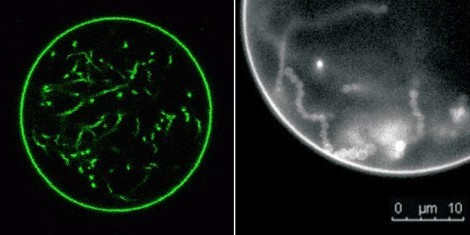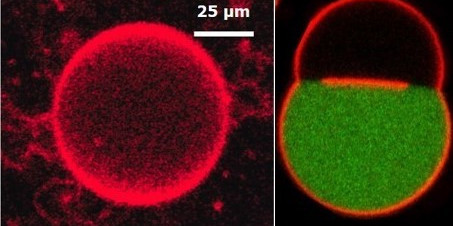Membrane remodeling in artificial cells: to bud or not to bud
- Kolloquium


Membrane remodeling in artificial cells: to bud or not to bud
Cell membranes are intricate assemblies of lipids and proteins, creating a complex environment that is challenging to study. To address this, biophysicists have developed minimal model systems with simplified compositions. Among these, giant unilamellar vesicles (GUVs), with diameters in the cell-size range (10 to 100 µm), have emerged as versatile tools for exploring the fundamental properties of lipid membranes. These model systems provide critical insights into membrane dynamics at the cellular scale, bridging our understanding of basic biophysical principles and cellular processes. This talk will present methodologies for probing key membrane properties, including bending rigidity and viscosity. Additionally, we will examine mechanisms of curvature generation in GUVs, shedding light on the morphological dynamics of membrane-bound organelles in cells. Finally, we will explore the interactions between membranes and biomolecular condensates/droplets (often referred to as "membraneless organelles"). These interactions can trigger wetting transitions that drive membrane remodeling processes such as vesicle budding, tubulation, and restructuring. Through these examples, we will demonstrate how GUVs serve as a powerful platform for studying membrane stability, remodeling, and morphology, ultimately advancing our understanding of cellular behavior and dynamics.









